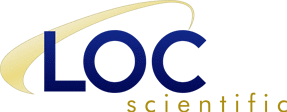Using the Right Water Purification System for Your Lab
Water is one of, if not the most, common reagents used in science labs. It’s a universal solvent and because of its abundance, chemists have been using it since the dawn of science to induce chemical reactions and study the effects of all sorts of compounds. Even though scientists have used it throughout the ages, what we know now is that the purer the water, the more accurate the chemical reactions. While it’s not possible to get completely pure water, advances in filtration technologies are always moving forward, and helping scientists conduct state-of-the-art research.
One of the main challenges of building a new laboratory from the ground up is installing the correct fixtures for the type of lab you’re designing. The needs of a chemistry lab are different than those of a biology lab and even the slightest oversight may cause the lab to function improperly or inefficiently. One of the lab fixtures that is crucial to proper lab function is a water purification system.
In a chemistry lab, it’s important to use water that has been deionized. Why is this? Water contains ions that it acquires from outside sources like soil and water pipes. Ions do not make it unsafe to drink but for a chemist, purity is critical to experiments and ions can interfere with the results. As such, water flowing into a chemistry lab needs to be de-ionized to be utilized properly, otherwise the results of any testing could be completely inaccurate. To understand the scale of water purification, consider the testing conducted by the Environmental Protection Agency. If they need to understand the quality of a soil sample, the purer the water they use during experimentation, the more accurate the results.
Another method of water purification is known as ultraviolet (UV) oxidation and sterilization. Rather than going through a deionization process, or in addition to going through a deionization process, UV oxidation and sterilization purifiers may be used to filter and sterilize water by killing microorganisms like viruses and bacteria. If ions are able to completely alter the results of chemical testing, think about what bacteria are able to do.
There are other types of water purification systems on the market, but the point is that your fixtures, including the water system are lab dependent. It’s essential that the lab designer have a strong knowledge of the types of equipment used in specific labs for specific purposes. Often, many of these filters are used in conjunction with one another. Just as a lab requires UV oxidation capabilities for water, an activated carbon filtration system may also be used to help ventilate noxious gases. Again, it comes down to the type of lab you have and what it’s going to be used for.

